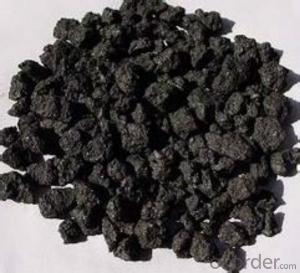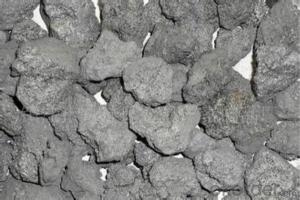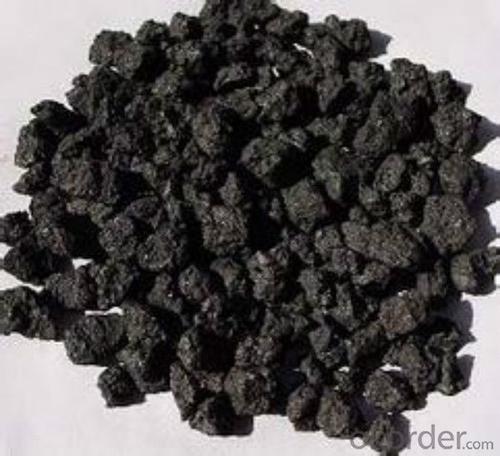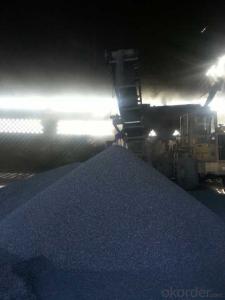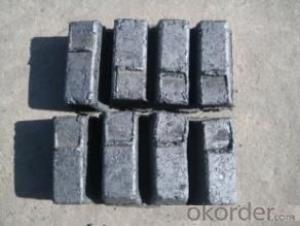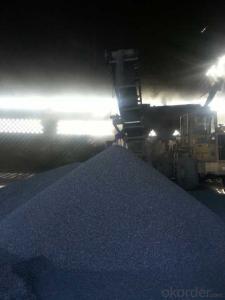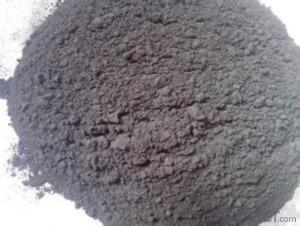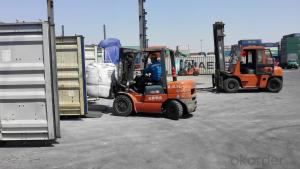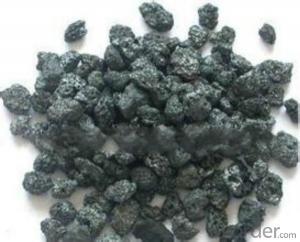FC 98.5% Calciend Petroleum Coke in steady Quality
- Loading Port:
- Tianjin
- Payment Terms:
- TT OR LC
- Min Order Qty:
- 20.6
- Supply Capability:
- 2060 m.t./month
OKorder Service Pledge
OKorder Financial Service
You Might Also Like
Brief introduction
Calcined Petroleum Coke comes from delayed coke which extracted from oil refinery. Although Calcined Petroleum Coke contains a little bit higher level of sulfur and nitrogen than pitch coke, the price advantage still makes it widely used during steel-making and founding as a kind of carbon additive/carburant.
BaoSteel is world famous organization. This calcined petroleum coke's raw material is from Bao Steel, which has great quality guarantee. It is more and more crucial for the steel industry and inreplacable
Features
Our product has follwing advantages:
The morphology, chemistry and crystallinity of recarburisers
have a major impact on the overall casting cost. The combined
application and cost benefits, which are derived through the
use of Desulco, enable foundries to manufacture castings in a
highly cost effective manner.
reduces
Recarburiser consumption
Power consumption
Inoculant consumption
MgFeSi consumption
Furnace refractory wear
Scrap rate
Tap to tap time
Slag inclusions risk
Chill
increases
Casting microstructure
Productivity
Process consistency
Specifications
Products | CPC | ||
F.C.% | 98.5MIN | 98.5MIN | 98MIN |
ASH % | 0.8MAX | 0.8MAX | 1MAX |
V.M.% | 0.7 MAX | 0.7 MAX | 1 MAX |
SULFUR % | 0. 5MAX | 0. 7MAX | 1MAX |
MOISTURE % | 0.5MAX | 0.5MAX | 1MAX |
Pictures
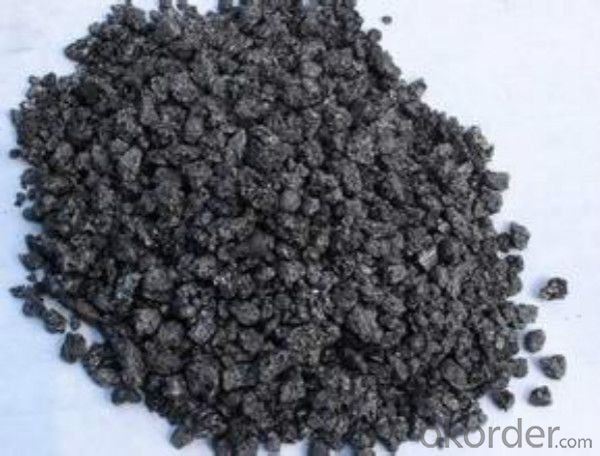
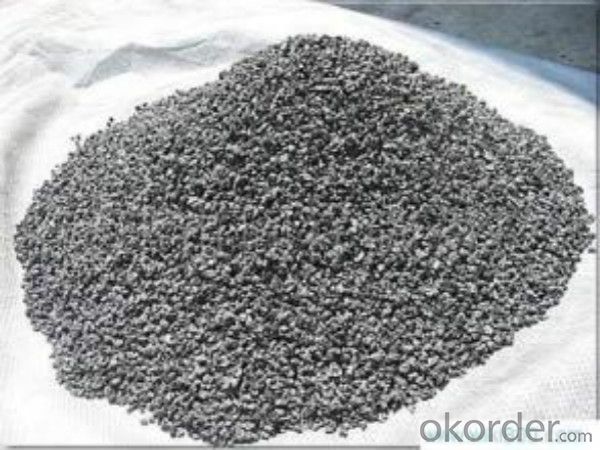
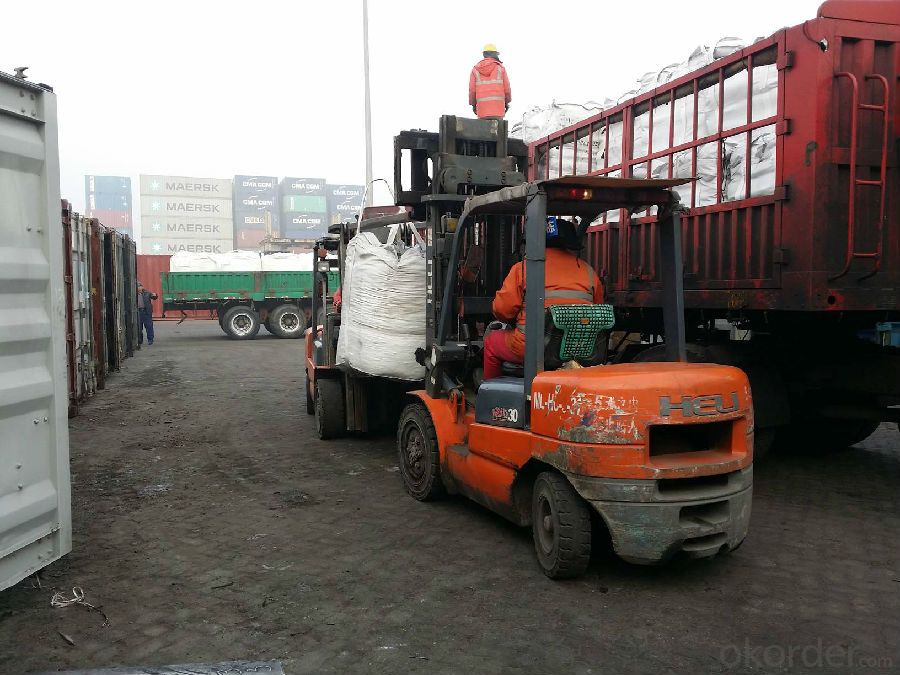
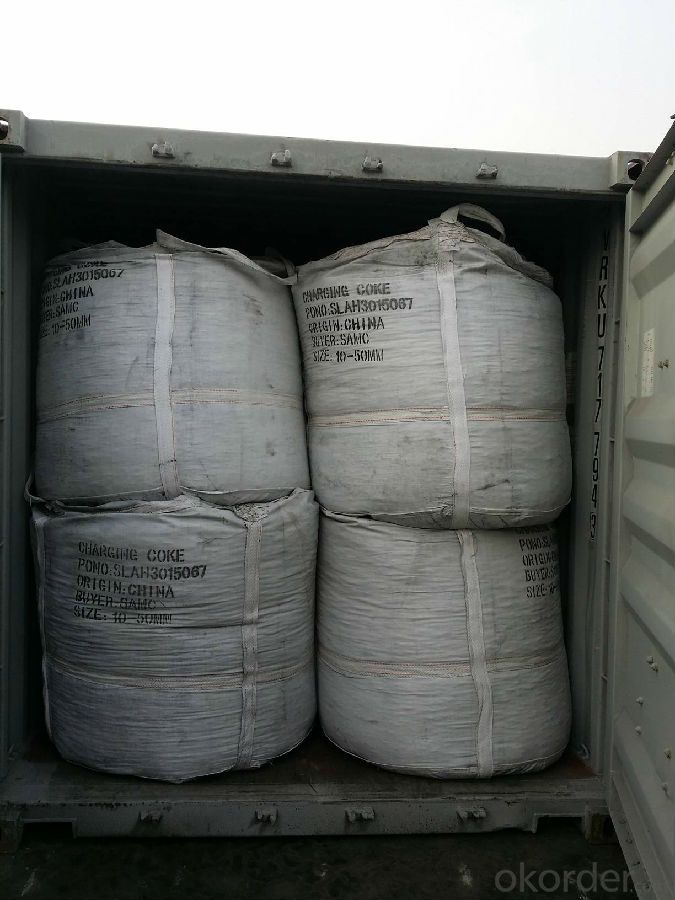
FAQ
1 What is the package?
In jumbo bag with/without pallet
2 What is the delivery time?
25 days after receiving the workable LC or down payment
3 What is the payment term?
T/T, L/C,D/P,D/A
- Q: How does carbon cycle through living organisms?
- The carbon cycle is the process by which carbon is exchanged and recycled among various components of the Earth, including living organisms. Carbon enters the living organisms primarily through the process of photosynthesis. During photosynthesis, plants and some other organisms use sunlight, carbon dioxide, and water to produce glucose and oxygen. Plants take in carbon dioxide from the atmosphere and convert it into glucose, which is used as a source of energy for their growth and development. Some of the glucose is used immediately by the plants, while the excess is stored as starch and other carbohydrates. This is how carbon is initially incorporated into the living organisms. Consumers, such as animals, obtain carbon by consuming plants or other animals that have consumed plants. When animals consume plants, they break down the stored carbohydrates into glucose, releasing carbon dioxide back into the atmosphere through the process of cellular respiration. The glucose is used by animals as a source of energy for their own metabolic processes. When animals and plants die or produce waste, their organic matter decomposes, and this decomposition releases carbon back into the environment. Some of this carbon is converted into carbon dioxide through the process of decomposition, which is then released into the atmosphere. However, a significant portion of the carbon is converted into organic compounds by decomposers, such as bacteria and fungi, which can be further utilized by other living organisms. This cycle continues as the carbon is constantly being exchanged between the atmosphere, living organisms, and the Earth's various reservoirs, such as the oceans and soil. Carbon can also be stored for longer periods in the form of fossil fuels, such as coal, oil, and natural gas. When these fossil fuels are burned for energy, carbon dioxide is released into the atmosphere, contributing to the greenhouse effect and climate change. Overall, the carbon cycle is a complex process that involves the continuous exchange and transformation of carbon among living organisms and the environment. It is crucial for maintaining the balance of carbon in our ecosystem and plays a significant role in regulating the Earth's climate.
- Q: Are carbon cells the same as alkaline batteries?
- Unlike, alkaline batteries are 4-5 times the capacity of carbon batteries, and the price is 1.5-2 times that of carbon.Carbon battery full name: neutral zinc manganese dioxide dry cell (zinc-manganese dry battery), belonging to the chemical source of the original battery, is a one-time battery. Because the chemical power unit has an electrolyte that is a non flowing paste, it is also called a dry cell, as opposed to a battery with a flowing electrolyte.
- Q: What are the consequences of increased carbon emissions on social inequality?
- Increased carbon emissions have significant consequences on social inequality. Firstly, the impacts of climate change, driven by carbon emissions, disproportionately affect marginalized communities who often lack the resources and infrastructure to adapt or recover from extreme weather events, such as floods, droughts, and storms. This exacerbates existing inequalities and widens the gap between the rich and the poor. Secondly, the burning of fossil fuels, a major contributor to carbon emissions, disproportionately affects low-income communities who are more likely to live near industrial areas or power plants. This exposure to air pollution leads to higher rates of respiratory diseases and other health issues, further deepening social inequality as access to quality healthcare is often limited for these communities. Moreover, the consequences of climate change, such as agricultural disruptions, water scarcity, and increased food prices, can lead to social unrest, migration, and conflicts, disproportionately impacting vulnerable populations. This creates a ripple effect on social and economic stability, further marginalizing already disadvantaged groups. Addressing carbon emissions and mitigating climate change is crucial for reducing social inequality. Transitioning to renewable energy sources, investing in sustainable infrastructure, and implementing policies that prioritize the needs of marginalized communities can help alleviate the burden on those most affected and promote a more equitable society.
- Q: How is carbon used in the production of graphite?
- The production of graphite relies heavily on carbon, which undergoes extreme heat and pressure to form its distinctive crystalline structure. The process commences with a high-quality carbon source, like petroleum coke or coal tar pitch, which is heated to eliminate impurities and transform it into pure coke. This coke is then ground into a fine powder and combined with a binder, typically pitch, to create a paste. The paste is molded into the desired shape, such as rods or blocks, and exposed to high temperatures in a furnace. The heat prompts the decomposition of the binder and the rearrangement of carbon atoms into hexagonal layers, characteristic of graphite. The furnace's high pressure aids in aligning the carbon layers, resulting in the formation of graphite crystals. Following the furnace process, the graphite undergoes further purification through treatments like chemical washing and acid leaching to eliminate any remaining impurities. Ultimately, the purified graphite is shaped into the final product, such as pencils, electrodes, or lubricants, using techniques like extrusion or machining. To summarize, the production of graphite involves subjecting a carbon source to high temperatures and pressures, leading to the creation of graphite crystals with its unique layered structure. This process enables the manufacturing of diverse graphite products, widely utilized in industries such as manufacturing, electronics, and energy.
- Q: Stability, primary carbon, two carbon, three carbon, four carbon
- (2) due to free radicals generated in the outer layer of only 7 electrons, eight corner structure did not reach saturation, so it is an electron deficient species, while methyl (or alkyl) is an electron donor groups can alleviate the lack of this kind of electron, so that the stable free radicals, free radicals and carbon alkyl substituents on the more, the more stable free radical. And more stable, more easy to generate.
- Q: How is carbon used in the production of textiles?
- Carbon is used in the production of textiles through various processes. For instance, carbon black, a form of carbon, is commonly used as a coloring agent in textile dyes, giving fabrics a wide range of colors. Additionally, carbon fiber, a lightweight and strong material derived from carbon, is used to create high-performance textiles for applications like aerospace, sports equipment, and automotive industries. Carbon-based chemicals are also used in textile manufacturing processes such as dyeing, finishing, and printing.
- Q: How does carbon affect the properties of steel?
- Carbon affects the properties of steel by increasing its hardness, strength, and overall durability. The presence of carbon allows for the formation of iron carbides, which strengthen the steel's crystal lattice structure. The higher the carbon content, the harder and stronger the steel becomes. However, excessive carbon can make the steel brittle, reducing its impact resistance.
- Q: Carbon 60 related information
- The 60 is the solid carbon black, graphite and diamond. In addition, in recent years, scientists have discovered that some exist in new form of elemental carbon, which is more important in 1985 found C60. C60 is a molecule made up of 60 carbon atoms, similar to football. At present, people have made great progress in the research of C60, and the application of C60 in superconductor, material science and other fields is deepening. In our country, great achievements have been made in this field. For example, the metal doped C60 superconductor has been successfully developed in collaboration with the Physics Institute of Peking University and the Chinese Academy of sciences. It can be said that the discovery of C60 is of great importance to the study of carbon chemistry and even the whole field of chemistry.
- Q: How does carbon dioxide affect the pH of soil?
- Carbon dioxide can affect the pH of soil through a process called carbonation. When carbon dioxide dissolves in water, it forms carbonic acid (H2CO3), which is a weak acid. When this acid is present in soil, it can react with certain minerals and compounds, such as limestone or calcium carbonate, found in the soil, resulting in their dissolution. This process releases positively charged ions, such as calcium (Ca2+) or magnesium (Mg2+), into the soil solution, which can increase the soil's alkalinity or raise the pH. Additionally, the presence of carbonic acid can also increase the availability of certain nutrients in the soil. For example, it can enhance the solubility of phosphorus, making it more accessible for plants to uptake. This can lead to an increase in soil fertility. However, it is important to note that the effect of carbon dioxide on soil pH can vary depending on different factors, such as the concentration of carbon dioxide, soil type, and the presence of buffering agents. In some cases, the buffering capacity of the soil can limit the impact of carbonic acid on pH changes. Therefore, while carbon dioxide can influence soil pH, it is just one factor among many that can affect the overall acidity or alkalinity of soil.
- Q: How can Dungeon Fighter Online's superior furnace rock carbon be obtained?
- DNF will be added to our senior LU Yan carbon in the mall, priced at 450 points and 50 points 10 coupon coupon 1, after use can start advanced equipment to strengthen in Kylie, strengthen the probability of success is greater, the following is a detailed introduction.
Send your message to us
FC 98.5% Calciend Petroleum Coke in steady Quality
- Loading Port:
- Tianjin
- Payment Terms:
- TT OR LC
- Min Order Qty:
- 20.6
- Supply Capability:
- 2060 m.t./month
OKorder Service Pledge
OKorder Financial Service
Similar products
Hot products
Hot Searches
